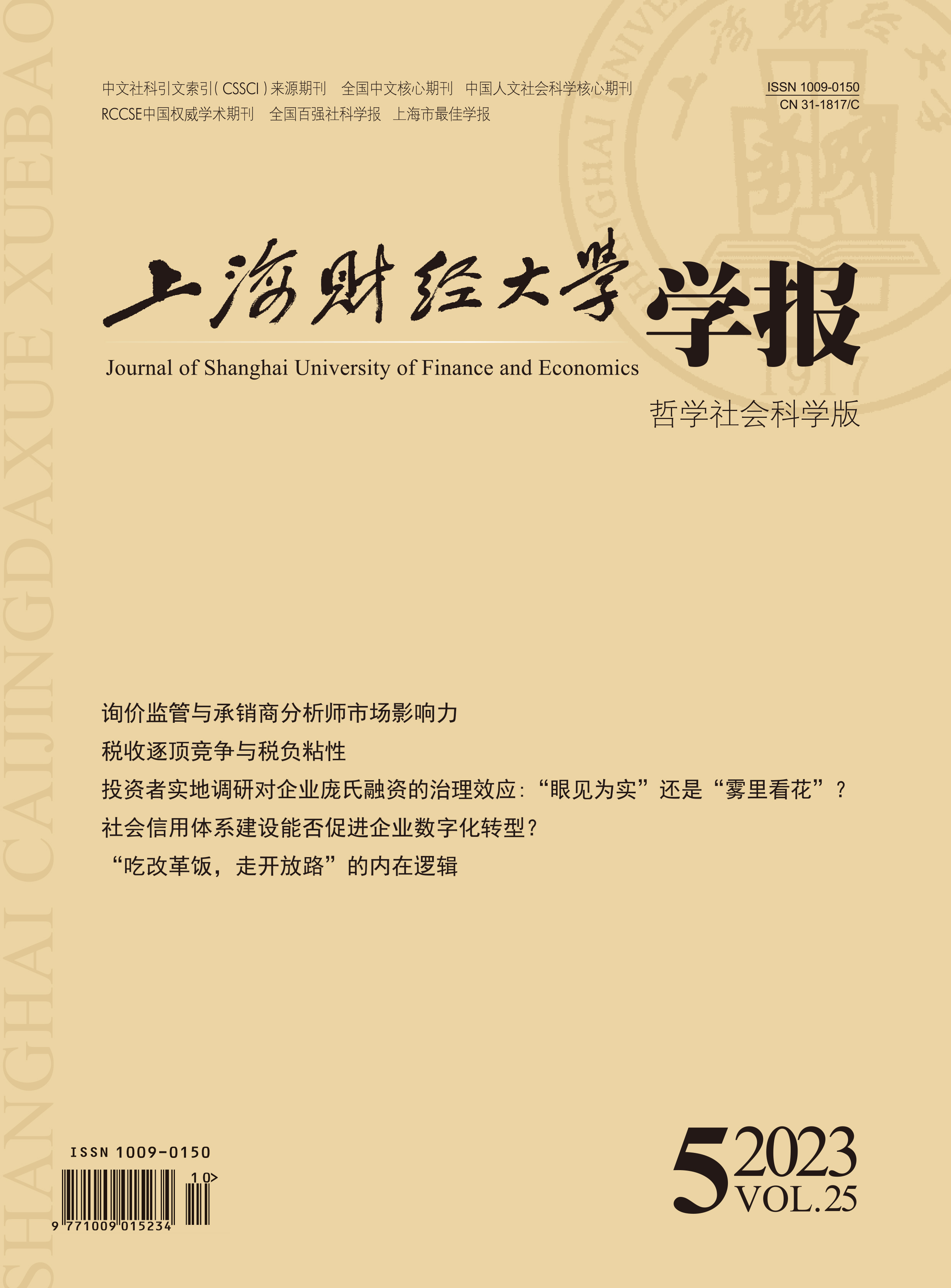Although the legislative power of tax collection in China belongs to the central government, the tax system feature of “a larger framework with fewer applications” has reserved a large space for local tax collection and management. The actual tax rate can be manipulated by the local government, so as to carry out horizontal tax competition. Traditional tax competition theory focuses on the competition for economic resources, and defines tax competition as a single race-to-the-bottom behavior. This paper constructs a mathematical model to demonstrate that under the perspective of multiple performance appraisal, a completely symmetric pure strategy Nash equilibrium game will promote the local government tax collection and management to have both race-to-the-bottom and race-to-the-top motivations. Especially, the race-to-the-top motivation will cause tax stickiness, which makes tax burden easy to rise but difficult to reduce, and thus affects the effectiveness of tax reduction. To verify the above inference, the traditional spatial weight matrix is further improved, and an asymmetric response model is constructed to decompose the spatial effect of tax competition. Based on the panel data of 269 cities from 2005 to 2018, the estimation result shows that tax competition has both the race-to-the-bottom effect and the race-to-the-top effect, and the latter effect dominates. Furthermore, the tax stickiness of listed companies is calculated with the modified individual coefficient test method, and it is found that the incidence of tax stickiness is about 20%, and some companies also exhibit anti-stickiness. Regression analysis shows that tax competition racing to the top will push up tax stickiness. This phenomenon is most evident among cities with similar economic levels within a province, but not among cities with close geographical distances, confirming that the promotion championship mechanism serves as an important driving force for tax competition. Heterogeneity analysis shows that the impact of tax competition on tax stickiness is particularly prominent among non-state-owned enterprises and manufacturing enterprises, highlighting the urgent need to alleviate tax competition tendencies and increase tax-reduction efforts. This paper expands the scope of tax competition research from the perspective of multiple performance appraisal, reveals that tax competition is an important reason for the stickiness of tax burden, and points out the direction for improvement in strengthening tax collection and management and optimizing performance appraisal in the future.
 / Journals / Journal of Shanghai University of Finance and Economics
/ Journals / Journal of Shanghai University of Finance and EconomicsJournal of Shanghai University of Finance and Economics
LiuYuanchun, Editor-in-Chief
ZhengChunrong, Vice Executive Editor-in-Chief
GuoChanglin YanJinqiang WangWenbin WuWenfang, Vice Editor-in-Chief
Tax Competition and Tax Stickiness: From the Perspective of Multiple Performance Appraisal
Journal of Shanghai University of Finance and Economics Vol. 25, Issue 05, pp. 32 - 45 (2023) DOI:10.16538/j.cnki.jsufe.2023.05.003
Summary
References
Summary
Cite this article
Liu Jindong, Xu Wenjun, Wang Jiahui. Tax Competition and Tax Stickiness: From the Perspective of Multiple Performance Appraisal[J]. Journal of Shanghai University of Finance and Economics, 2023, 25(5): 32-45.
Export Citations as:
For
ISSUE COVER
RELATED ARTICLES




 5552
5552  8152
8152

